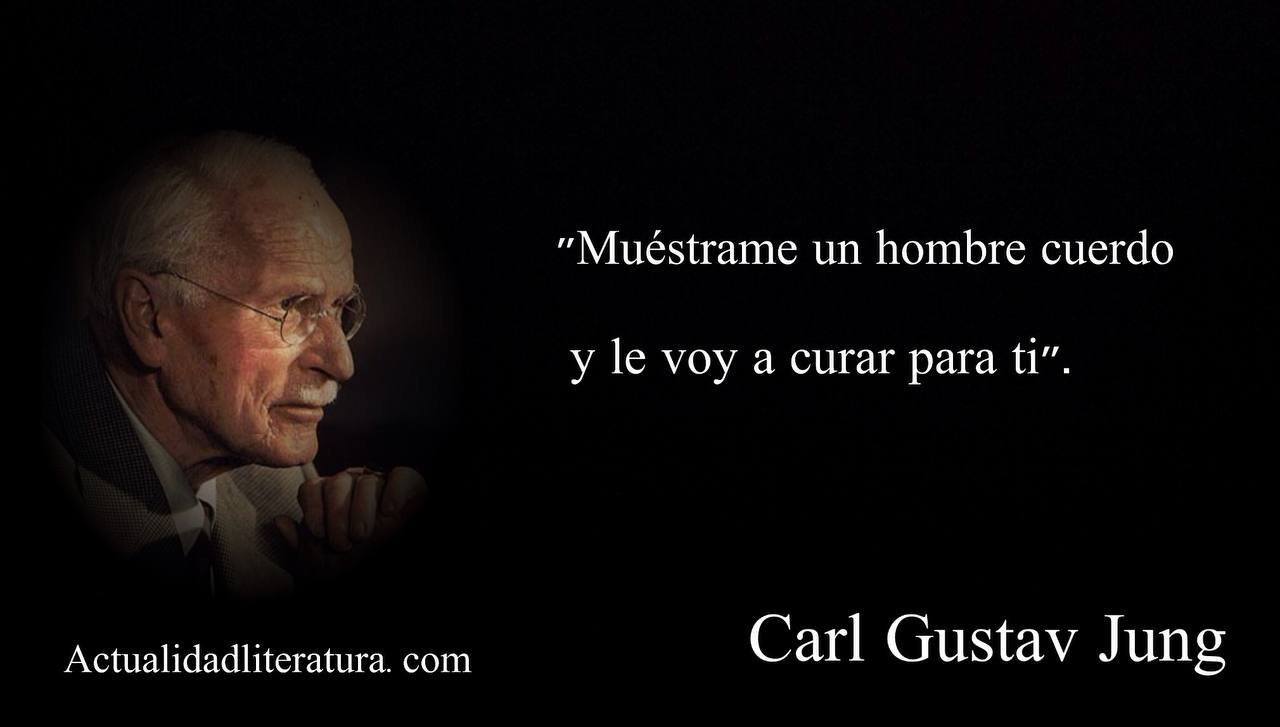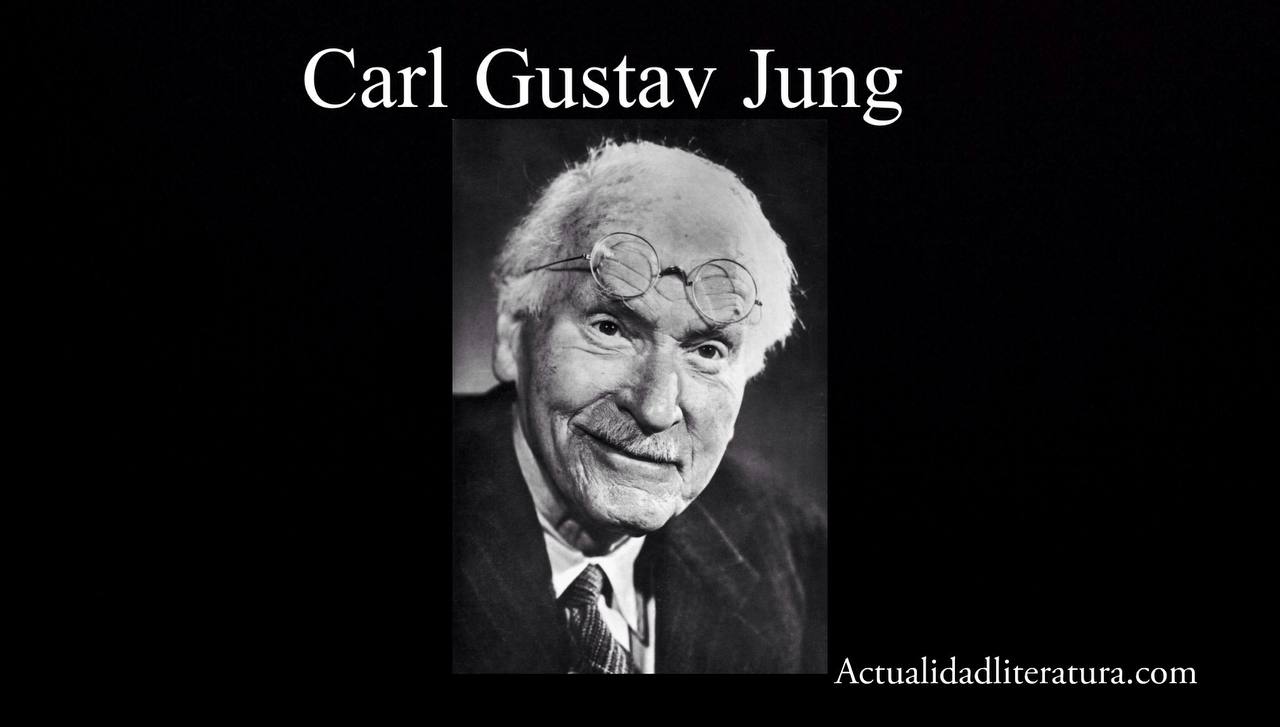
Carl Gustav Jung Quote
The importance of Carl Gustav Jung within the medicine of the XNUMXth century is beyond any doubt. Not surprisingly, he is considered the founder of analytical psychology due to his fundamental contributions to modern psychiatry. In addition, this eminent doctor born in Switzerland excelled in other related fields, such as: anthropology, philosophy, religion, literature and archaeology.
In consecuense, it is quite unfair —and succinct— to assess Jung's legacy without taking into account the versatility of his work. For this reason, all his known books are briefly described in this article. Indeed, his texts influenced countless highly prominent scientists and intellectuals of his time and generations to come.
The best-known books and writings of Carl Gustav Jung
Transformation symbols (1912)
Wandlungen and Symbol of the Libido —original title in German— is, in the words of the author, “an extensive commentary on a practical analysis of the prodromal stages of schizophrenia”. The study was based on Dr. Théodore Fluornoy's notes regarding the fantasies of Miss Frank Miller (which also appear in the appendix to Transformation symbols).
In the text Jung explains that the constant allegories to the mythology contained in Miller's daydreams they were indications of early stages of schizophrenia. Consequently, the Swiss doctor's prognosis was one of imminent schizophrenic collapse. But such a prediction was not fulfilled, and Jung later stated that the book actually addresses some critical questions of his own psyche.
seven sermons to death (1916)
This collection of Gnostic documents was initially published under a pseudonym and is part of the series The Red Book (Liver Novus – published in 2009). It is a set of Jung's reflections on his "confrontations with the unconscious" and the different states of consciousness. These deliberations were only shared privately while the author was alive.
Personality types (1921)
This book was originally published in the German language under the name of Psychological Types (psychological types) in 1921. In 1923 it was translated into English and later became part of the sixth volume of The Collected Works of CG Jung.
It is considered one of the most transcendental texts of the Swiss psychologist due to its approach to the four functions of consciousness. Jung grouped them into non-rational functions (sensation and intuition) and judging or rational functions (thinking and feeling). In turn, these are modified by the two main types of attitude: extrovert and introvert.
Modern man in search of a soul (1933)
This essay reflects on some of Jung's dramatic experiences in the late 1920s and early 30s. covers different topics related to Gnosticism, theology, philosophy of the Far East and spirituality in general. To do this, the author resorted to the analysis of dreams and the application of this technique for psychotherapeutic purposes.
In addition, Jung explored the -in his opinion- stages of life (from the perspective of archaic man) and compared his theories with those of Sigmund Freud. Later, the author discusses the relationship between psychology and literature before culminating in a meditation on the spiritual problems of modern man in the post-war era. World War I.
Psychology and alchemy (1944)
This title also appears in the twelfth volume of The Collected Works of CG Jung. The text explores the analogies between alchemy —Jung's central hypothesis about collective consciousness—, Christian dogma and psychological symbolism. Similarly, the author explains the interrelationship between chemical processes and the parallel mystical components of alchemy.
Reply to Job (1952)
Antwort auf Hiob -original name in German- is a work that refers to the meaning of the Book of Job of the Bible. For Jung, these biblical passages constitute the "divine drama" of Christianity and reaffirm the unity between God and human beings. The argument and development of this book has been praised by personalities such as the theologian John Shelby Spong and the writer Joyce C. Oates..
memories, dreams, thoughts (1962)
Erinnerungen, Traume, Gedanken -original name- is an autobiography of Carl Jung written together with Aniela Jaffé. The book was published in German a year after his death (which occurred on June 6, 1961) and in English in 1963. The text covers details of the Swiss psychologist's childhood, his personal life and the exploration of his psyche.
The man and his symbols (1964)
Jung contributed to the first part of this book —called “An Approach to the Unconscious”— and it was his last work written before he died. The other authors are: Joseph L. Henderson (“Primitive Myths and Modern Man”), Marie-Louise von Franz (“The Process of Individualization”), Aniela Jaffé (“Symbolism in the Plastic Arts”), and Jolande Jacobi ( “Symbolisms within an individual analysis”).
The purpose of the publication was, through numerous illustrations and descriptions, to clearly explain Jung's theories to non-specialist readers. A curious fact about this book is that Jung rejected its realization in the first instance. However, he changed his mind due in large part to the large number of readers who wrote to him through the BBC.
Biographical synthesis

Carl Gustav Jung
Birth, childhood and studies
Karl Gustav Jung (Germanic name) was born in Kesswil, Thurgau, Switzerland, on July 26, 1875. His father, Paul Jung, was a psychologist and pastor. little carl he had a lonely childhood, very marked by the observations of his parents' behavior and those around him, in an attempt to understand them.
Likewise, the vivid imagination of his childhood fueled his need to analyze the religious beliefs—those of his father, especially—and the traditions of his homeland. Therefore, His choice to study psychology at the University of Basel was quite logical. (1895 – 1900), as well as his master's degree at the University of Zurich (1905).
Some aspects of his professional and personal life
Jung married the daughter of a wealthy businessman, Emma Rauschenbach, in 1905, with whom he had five children: Agathe, Franz, Marianne, and Helene. Although the couple remained together until her death in 1955, various historians have noted at least a couple of extramarital affairs with Sabina Spielrein and Toni Wolff.
Likewise, the Swiss psychologist participated in World War I enlisted as a doctor in the British Army. However, Switzerland's neutrality meant that his medical staff served on both sides of the war. Just before war conflict, Jung finished distancing himself from Dr. Sigmund Freud (Together they developed what would become the foundations of psychoanalysis).






